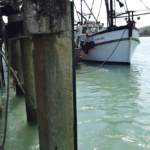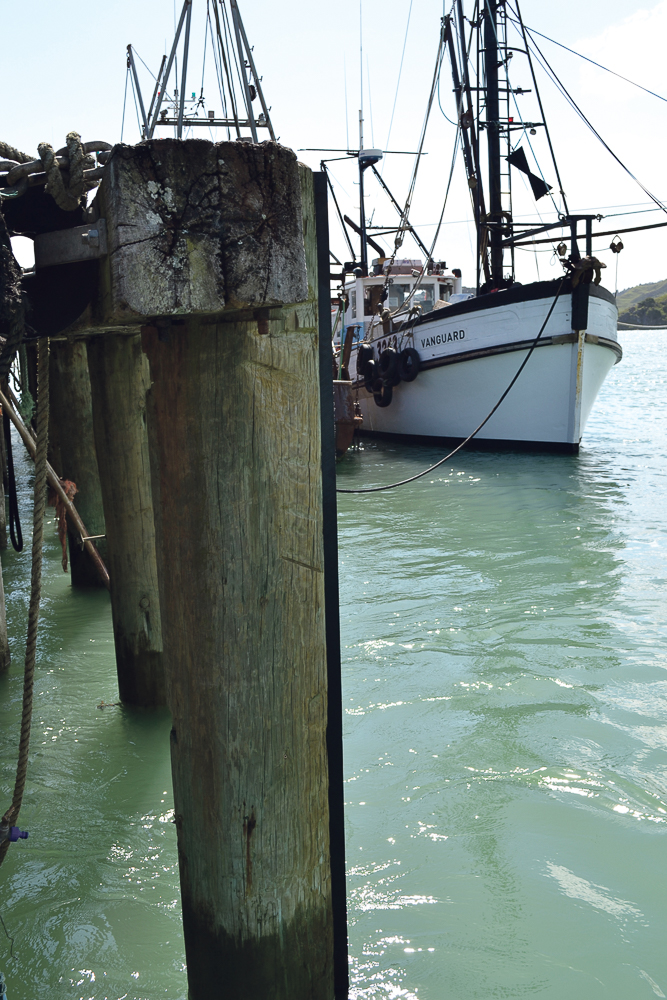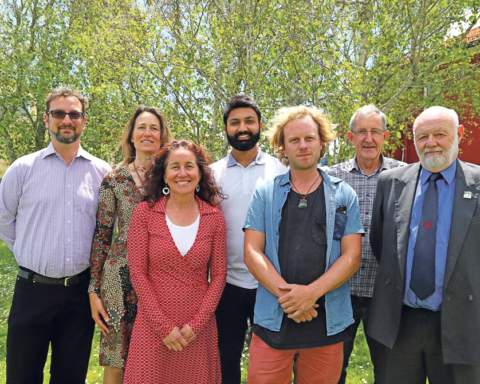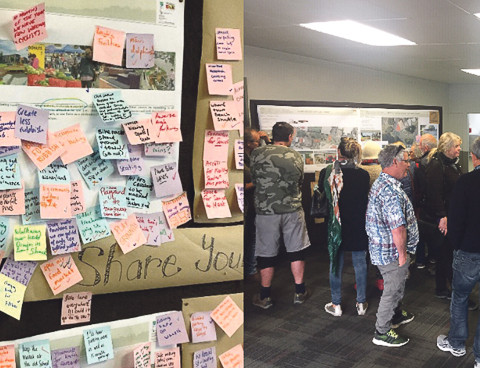New fenders now attached to the row of poles running along the front of Raglan’s wharf are the first tangible signs of progress in a key redevelopment plan fast-tracked by Waikato District Council back in May, thanks to a $2.5 million grant from the Government’s provincial growth fund.
The black teflon strips may not be immediately obvious to visitors and tourists but council community connections manager Megan May says commercial fishermen are “very excited” at the hi-tech replacement for the worn hunks of wood they used to tie up against.
The fenders – which with “a few other bits” came at a cost of about $35,000 – will help prevent damage both to trawlers and berthing structures.
Meanwhile the wharf’s four ladders will also soon be replaced, Megan adds.
The two sets of work are only a drop in the bucket compared with what’s to come in the project which got underway after the Covid-19 lockdown and is scheduled to run through until the end of next year.
Also imminent is an extension to the wharf proper of the new walkway on Wallis St. While council is waiting on its final design, Megan points out however that no physical work will begin until the end of February when Raglan’s busy summer season has eased.
The extension could be built on rock foundations, so no car parking is lost.
Meantime designs for a preferred stand-alone structure to provide extra berthing to the east of the wharf – on the Cox Bay side – are not yet settled but Megan is optimistic that “we will tender for the pontoon before Christmas”.
She and Raglan Community Board representative Dennis Amoore head up a steering committee which is managing the whole process. They in turn work with a project control group made up of stakeholders, Ngāti Māhanga, local councillor Lisa Thomson and others including Soul Shoes’ Rob Galloway, who transformed the wharf’s historic silos into upmarket accommodation.
“It’s a complex project with lots of moving parts to align,” Megan acknowledges of the wharf’s redevelopment. Dennis adds that a number of stakeholders – from commercial fishermen to residents and retailers – are involved and need to be included in what happens at the wharf.
He describes the site as “multi-use” with both commercial and retail interests. “There’s lots to consider.”
In fact the outcome of a risk assessment procedure was due early this week to determine the safety of the wharf environment for its users and, from that, how structural works will be prioritised.
For instance there’s been discussion around safety rails at the wharf, says Megan, so handrails may be installed if the findings show they’re needed.
Lighting, signage and traffic management are also under the spotlight.
Cr Thomson is confident the project is in “really good hands”, with the community and council staff working collaboratively. “It’s a big project for a small community,” she says, encouraging anyone who wants an input to contact Raglan Community Board or to keep informed through its website.
The wharf redevelopment is, coincidentally, under the overall day-to-day management of a Raglan resident: Tom Snaith from the Hamilton office of an Auckland-based international engineering consultancy, Beca Group.
Once a regular port-of-call for coastal shipping, the wharf in recent decades has become what Cr Thomson describes as “an iconic feature of our seaside village”. Along the way it has bounced back from a disastrous fire, the April 2010 blaze which razed its historic shed structure.
Edith Symes











